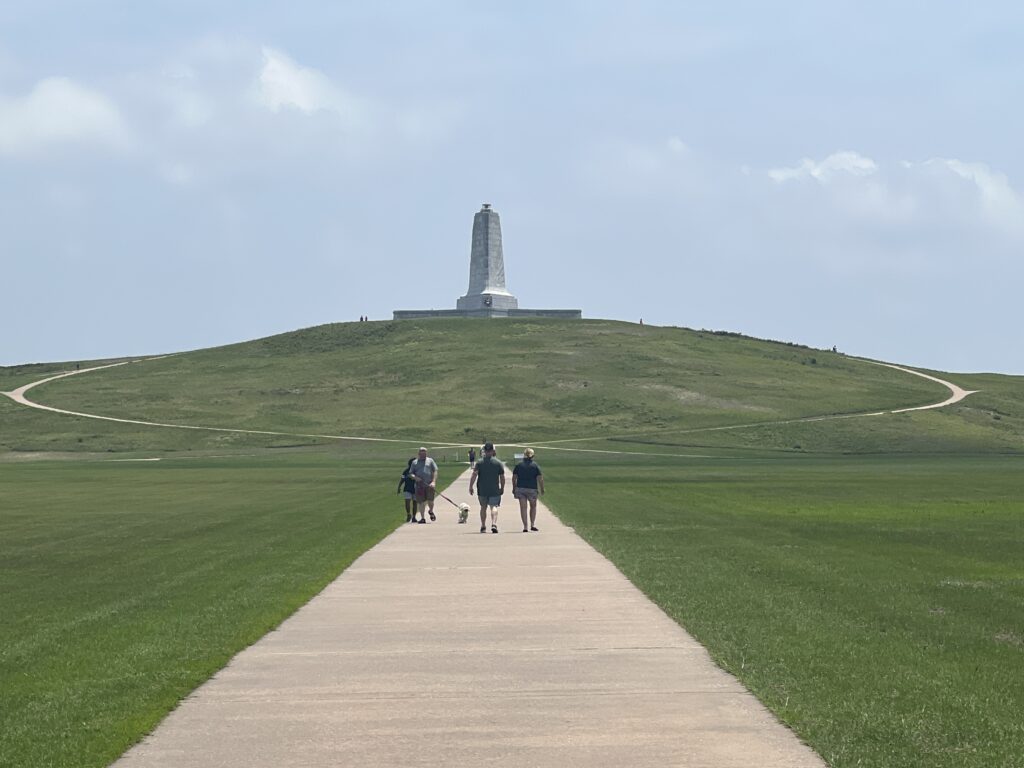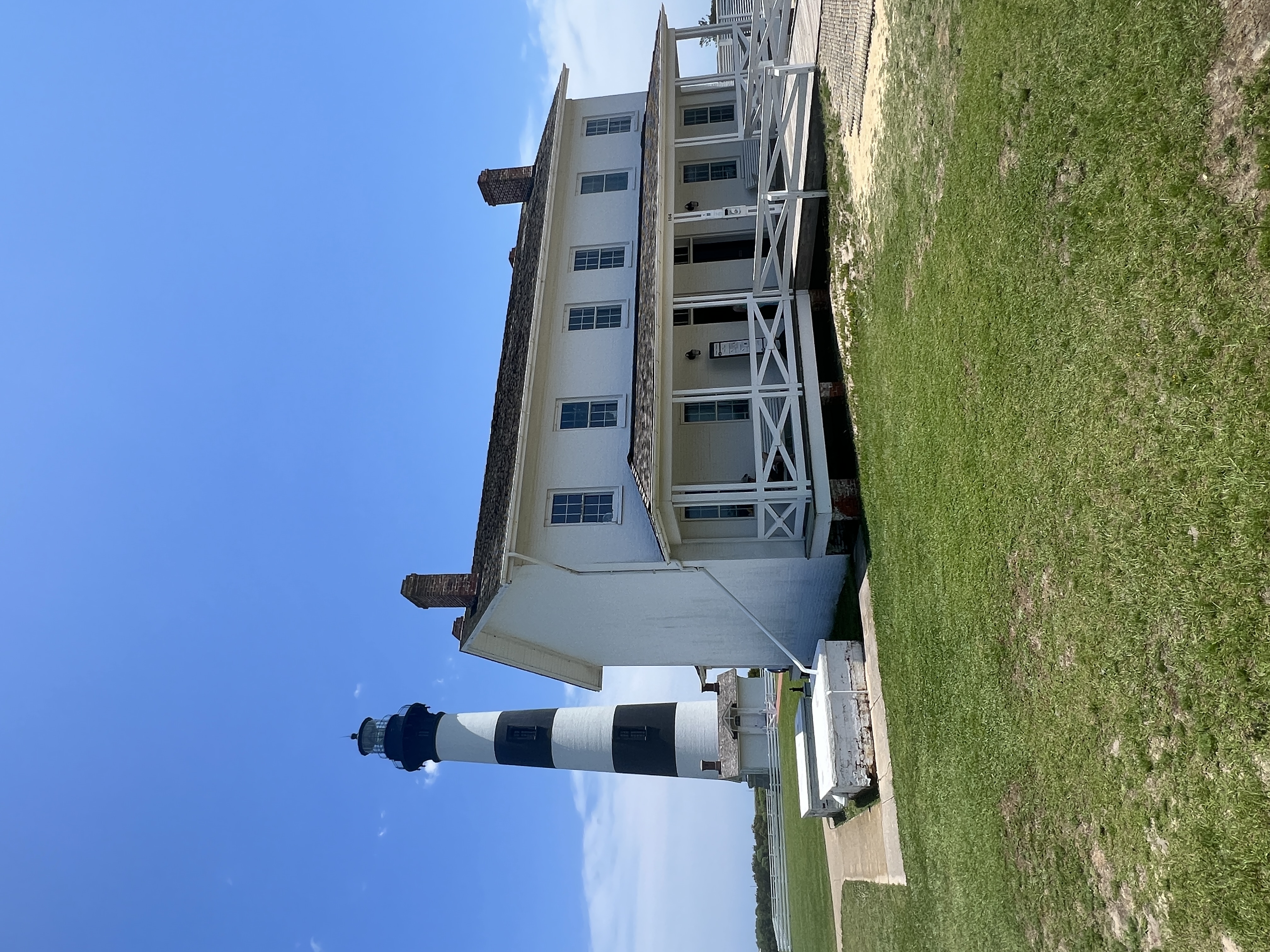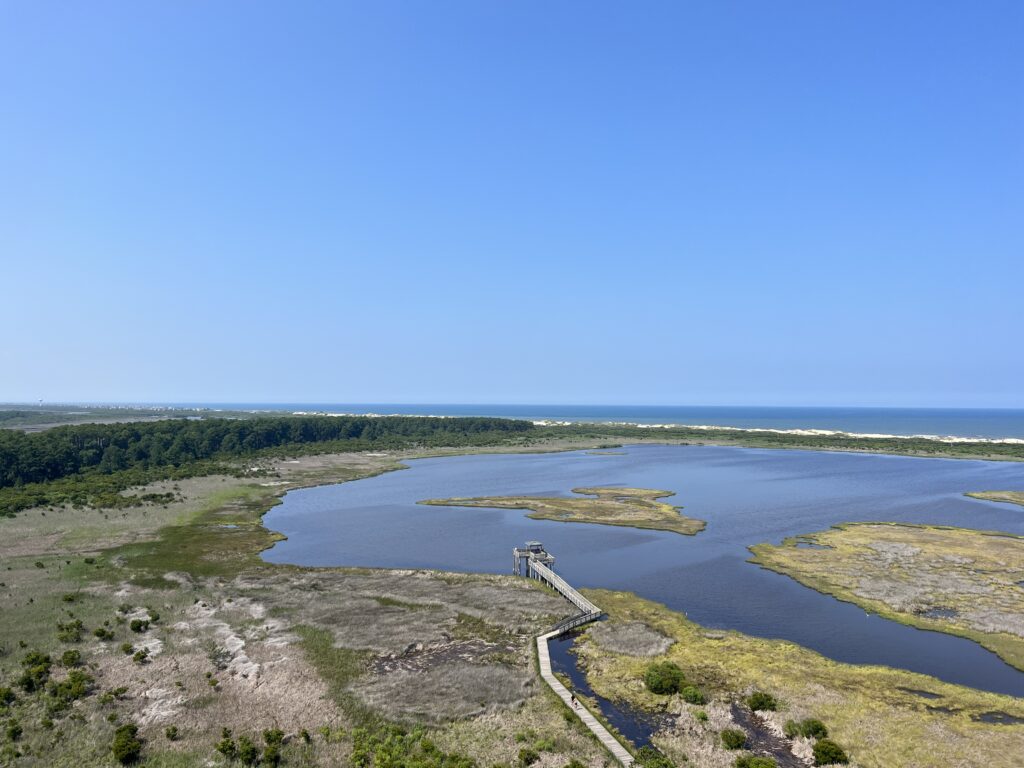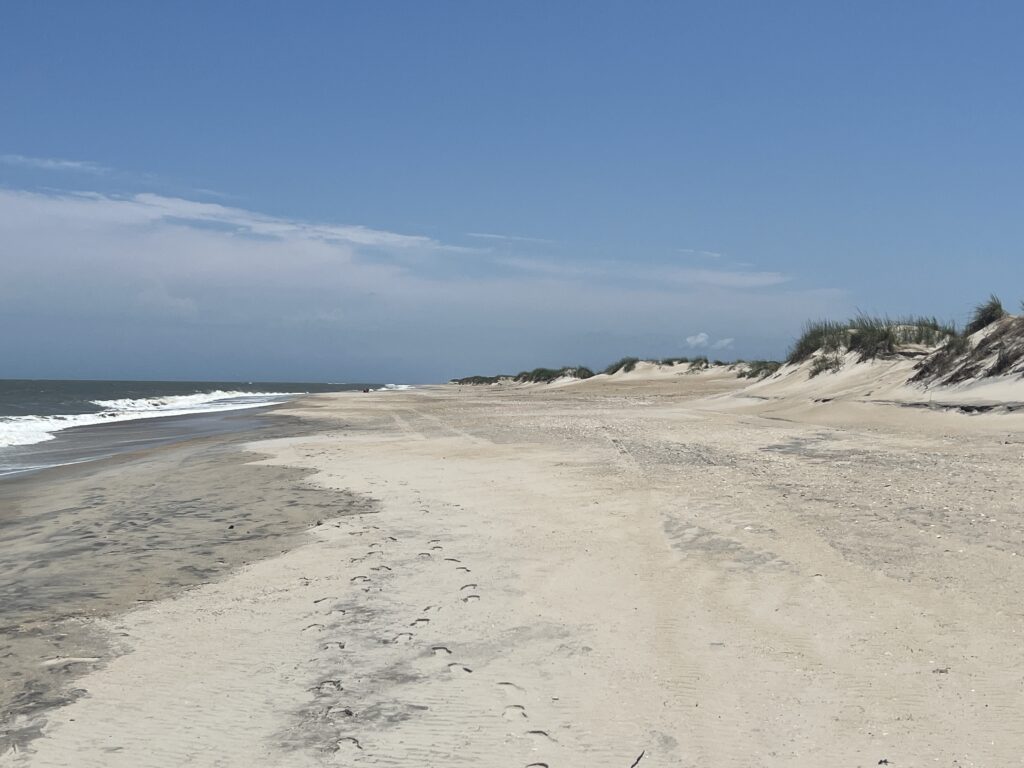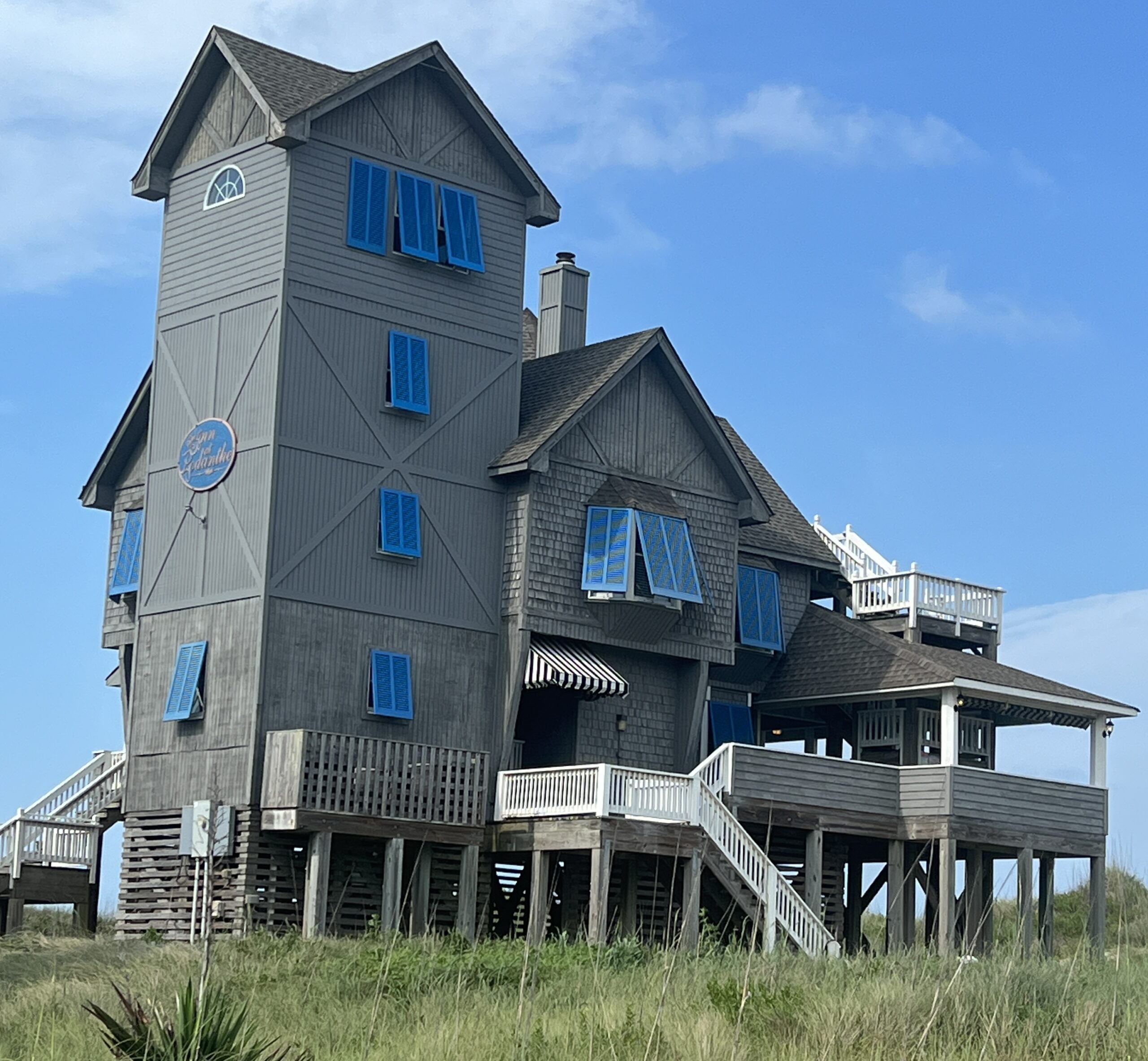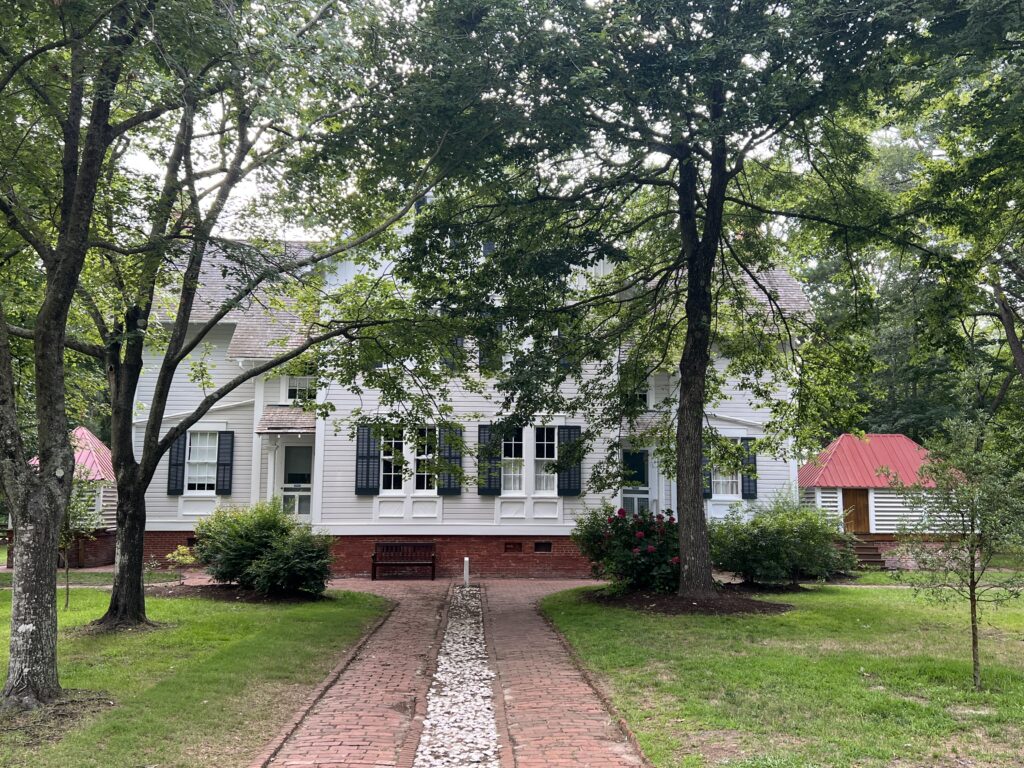- 66.4 miles
- 7 hours 30 minutes
- 8.8 mph average speed
- 7-11 mph winds
It was a long day of cruising on the Pamlico Sound with no land in site for much of the day. Once we neared Manteo, the scenery was breathtaking with small islands scattered about the sound.
We thoroughly enjoyed our stay in Manteo and also rented a car from the Ford dealership in order to visit the rest of the Outer Banks. We drove along the Outer Banks National Scenic Byway through the towns of Corolla, Currictuck, Duck, Kitty Hawk, Nags Head and Hatteras. We visited three more lighthouses and the Wright Brothers National Memorial Park. We were able to see and do everything we wanted to do and much more. The only thing we did not do that we would have liked to have done if we had known about it sooner was take an ATV tour on the beach to see the Corolla wild horses, descendants of the colonial Spanish Mustangs brought here by explorers nearly 500 years ago. The area where the horses roam is only accessible by four wheel drive so we were not able to take our rental car and it was too late in the day to get tickets for an ATV tour by the time we reached the area. But, suffice it to say, we had plenty of other adventures both in Manteo and the rest of the Outer Banks!
The charming town of Manteo is located on the eight mile by two mile Roanoke Island. Roanoke Island is believed to be the site of the disappearance of The Lost Colony, one of the greatest mysteries in American history. John White had come over with the colonists and by the time he returned to England to get supplies to take back to the colonists, England was preoccupied with the looming war with Spain. While Sir Walter Raleigh wanted to help the colonists, Queen Elizabeth I had ordered all ships remain in England to defend against the Spanish Armada so White was not able to return to the colonists for nearly three years. When he finally returned, all of the 116 colonists including his family, had mysteriously disappeared. Included among his family was his newly born granddaughter, Virginia Dare, believed to be the first English settler born in America. There are several theories as to what happened to these settlers but none are conclusive. John White and many modern historians believe that the colonists had moved south to Hatteras Island where the friendly Croatan Native Americans lived.
The English settlement of The Lost Colony in 1585 was 22 years before the first permanent English settlement in Jamestown in 1607, and 35 years before the second permanent English settlement in Plymouth in 1620.
The Lost Colony Outdoor Drama is the longest running (86 years) outdoor symphonic drama in the country and tells the story of England’s first attempt to colonize the New World in 1585 by Sir Walter Raleigh. Over 4 million people, including President Roosevelt, have seen the show. It was fabulous!! The sets, costumes, singing, acting and actors were top notch and it was so intriguing to be watching it under the stars right on the banks of Roanoke Sound. We felt like we got to know the brave colonists and the Indians as well as Queen Elizabeth I and her court. Unfortunately, we were not allowed to take photos during the show but wonderful photos are available online. The show won a Tony in 2013.
The Lost Colony Outdoor Drama was the start of Andy Griffith’s acting career. After graduating from High School, he performed in the play from 1947 to 1953 and eventually landed the role of Sir Walter Raleigh. He liked the area so much that he decided to move to Manteo full time and lived here until his death in 2012.
Roanoke Island Festival Park is a 27-acre park that exhibits what life was like for the first English settlers in 1585. It includes a Settlement Site with costumed interpreters, a replica of Elizabeth I, the ship that brought the colonists to the area, an American Indian town and a museum.
Fort Raleigh National Historic Site is believed to be the actual site where the first colonists settled. We learned more about The Lost Colony here as well as their relations with the Native American tribes. In the museum, we saw artifacts that had been discovered on the site and watched a very good video about The Lost Colony and the archeological efforts to unearth their history. The area also became the Freedman’s Colony 300 years later beginning in 1863. Over 2,000 freed African Americans from all across the south lived and worked in the area for several years.
The Wright Brothers National Memorial Park was fascinating! We learned that the first flight was not actually in Kitty Hawk but four miles south in Kill Devil Hills. The reason that Kitty Hawk is sighted as being the location of the first flight is that Orville Wright sent a telegram home to their father from Kitty Hawk on December 17, 1903 announcing the first successful flight. The Wright Brothers made over 1,000 gliders and tested for four years before making the first successful flight. In the museum, we picked up several phrases that the Wright Brothers exhibited as they attempted to make the impossible possible by taking their dream to reality. These phrases should be an inspiration to us all in our daily lives: think outside the box, overcome challenges, keep learning, anticipate setbacks, details matter, do it yourself, don’t give up, sharpen your skills, believe, keep going, be curious, observe, ask questions.
The Outer Banks is often referred to as the “Graveyard of the Atlantic”. There are more than 2,000 shipwrecks in the area but still less that the nearly 5,000 shipwrecks in the Great Lakes, the “Shipwreck Capitol of the World”.
Bodie Island Lighthouse was built in 1872 and manned by keepers until 1932 when it was electrified. This is the third lighthouse built in this area. The first one was built in 1847 but, due to poor design, was abandoned in 1859. The second one was built in 1859 but was blown up in 1861 by Confederates who feared the Union would use the tower during the Civil War. We climbed the 219 steps to the top which is equivalent to climbing a ten story building!
Cape Hatteras Lighthouse is the second tallest lighthouse in the world. There are 257 step which we would have climbed had they not been closed for restoration.
Currituck Beach Lighthouse was built in 1875 and is made with one million bricks. It was the last major lighthouse to be illuminated on the Outer Banks. We climbed the 220 steps to the top, another 10 story building! This was our favorite lighthouse of the five lighthouses that we visited in the Outer Banks.




















